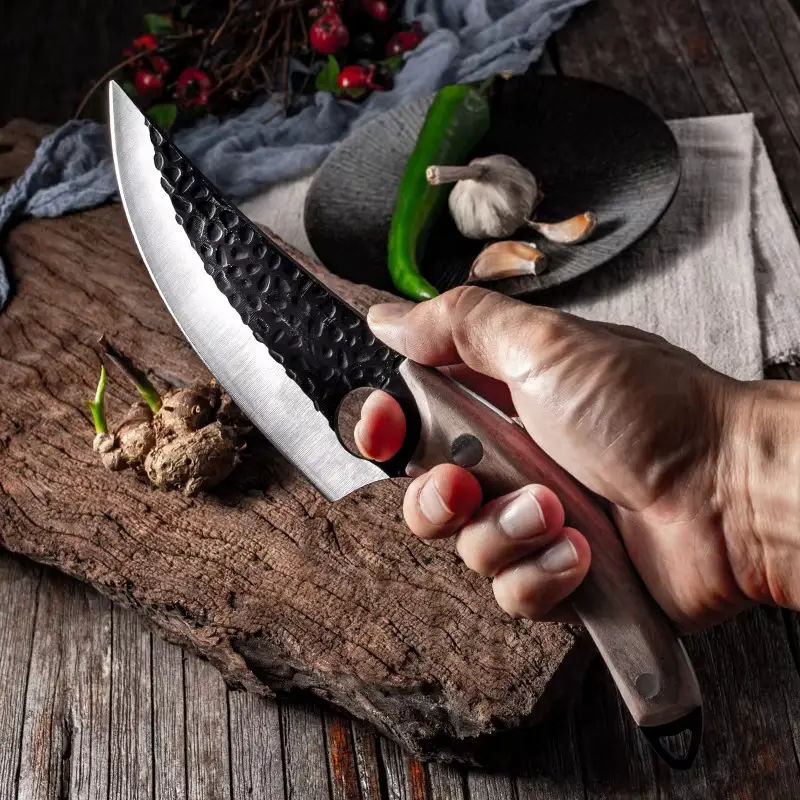The aroma of chocolate and vanilla wafted through my kitchen last Easter as I embarked on a new baking adventure: homemade Easter cream eggs. For years, we’d relied on store-bought treats, but this year, I was determined to create something special, something from scratch. Let me tell you, the results were beyond my expectations! My family, usually divided in their candy preferences, unanimously declared these homemade cream eggs a resounding success. The creamy, melt-in-your-mouth centers encased in rich, dark chocolate were simply irresistible. Even my pickiest eater, my teenage son, devoured them and asked for more. The best part? They weren’t overly sweet like some commercial versions, and they had a beautiful homemade charm that store-bought candies just can’t replicate. If you’re looking to elevate your Easter treats this year and create something truly memorable, look no further. This homemade Easter cream egg recipe is your ticket to Easter candy bliss.
Ingredients
To embark on your homemade Easter cream egg journey, gather these simple yet crucial ingredients. The quality of your ingredients will directly impact the final taste, so opt for the best you can find, especially when it comes to the chocolate.
For the Creamy Centers:
- 4 cups Powdered Sugar: This is the foundation of your creamy center. Ensure it’s fresh and lump-free for the smoothest texture. Sifting it beforehand is always a good idea to guarantee no hidden clumps.
- 1 cup (2 sticks) Unsalted Butter, softened: Butter adds richness, flavor, and that signature melt-in-your-mouth quality. Make sure your butter is properly softened to room temperature, but not melted. This allows it to cream smoothly with the powdered sugar. Unsalted butter is preferred as it gives you better control over the overall sweetness and salt balance.
- 1/2 cup Light Corn Syrup: Corn syrup acts as a humectant, keeping the cream centers moist and preventing them from becoming dry or crumbly. Light corn syrup is preferred for its neutral flavor, allowing the other flavors to shine through.
- 2 teaspoons Vanilla Extract: A good quality vanilla extract is essential for flavor. It adds warmth and depth to the creamy centers. You can also experiment with other extracts like almond or peppermint for a different twist, but vanilla is the classic choice.
- Pinch of Salt: Salt enhances the sweetness and balances the flavors. Just a pinch is enough to make a noticeable difference.
For the Chocolate Coating:
- 12 ounces Dark Chocolate or Semi-Sweet Chocolate, finely chopped: The chocolate coating is the perfect complement to the sweet creamy center. Dark chocolate provides a slightly bitter counterpoint that balances the sweetness beautifully, while semi-sweet chocolate is a classic choice for those who prefer a sweeter candy. Choose high-quality chocolate for the best flavor and melting properties. Chocolate chips can be used in a pinch, but bars of chocolate that are finely chopped melt more smoothly and evenly.
- 1 tablespoon Coconut Oil or Vegetable Shortening (optional, for smoother melting): Adding a tablespoon of coconut oil or vegetable shortening to your chocolate helps it melt more smoothly and creates a slightly glossier finish. It also makes the chocolate a bit more forgiving to work with and prevents it from seizing up as easily. This is optional, but recommended, especially for beginners.
Optional Decorations:
- Sprinkles: Colorful sprinkles are a classic Easter decoration and add a festive touch to your cream eggs.
- Colored Sugar: For a more elegant sparkle, colored sugar is a great choice.
- Melted White Chocolate or Candy Melts: For drizzling or creating patterns on your eggs.
- Edible Glitter: For extra sparkle and glamour.
- Food Coloring (gel or liquid): If you wish to tint your cream centers, gel food coloring is recommended as it is more concentrated and less likely to alter the consistency of the cream. Liquid food coloring can be used sparingly, but be mindful of adding too much liquid.
Instructions
Now that you have all your ingredients ready, let’s dive into the step-by-step process of creating these delectable homemade Easter cream eggs. Follow these instructions carefully for candy-making success!
Step 1: Prepare the Creamy Center Mixture
- Cream the Butter: In a large mixing bowl, using an electric mixer (stand mixer or hand mixer), cream the softened butter until it is light and fluffy. This usually takes about 2-3 minutes. Scraping down the sides of the bowl occasionally ensures all the butter is evenly creamed.
- Gradually Add Powdered Sugar: Gradually add the powdered sugar to the creamed butter, one cup at a time, mixing on low speed to prevent a powdered sugar cloud. After each addition, mix until just combined. Don’t overmix at this stage, as it can make the cream center tough.
- Incorporate Corn Syrup and Vanilla: Add the light corn syrup, vanilla extract, and a pinch of salt to the mixture. Mix on low speed until everything is well combined and the mixture is smooth and creamy. Again, avoid overmixing.
- Adjust Consistency (if needed): If the mixture seems too soft, add a little more powdered sugar, one tablespoon at a time, until you reach a workable consistency that can be easily shaped. If it’s too dry, add a tiny bit of corn syrup, a teaspoon at a time. The ideal consistency is similar to playdough – moldable but not sticky.
- Optional Coloring: If you desire colored cream centers, now is the time to add your food coloring. Add gel food coloring a drop at a time until you achieve your desired shade. Mix thoroughly to distribute the color evenly. If using liquid food coloring, use it very sparingly.
Step 2: Shape the Cream Egg Centers
- Prepare Baking Sheets: Line two baking sheets with parchment paper or silicone baking mats. This will prevent the cream eggs from sticking and make cleanup easier.
- Scoop and Shape: Using a tablespoon or a small cookie scoop, scoop out portions of the cream center mixture. Roll each portion between your palms to form an egg shape. You can make them any size you prefer, but aim for consistent sizes for even coating.
- Place on Baking Sheets: Place the shaped cream eggs onto the prepared baking sheets, leaving a little space between each egg.
Step 3: Chill the Cream Egg Centers
- Chill in Refrigerator: Place the baking sheets with the shaped cream eggs in the refrigerator. Chill for at least 30 minutes, or preferably 1-2 hours. Chilling firms up the cream centers, making them easier to handle and dip in chocolate. This step is crucial for preventing the cream centers from melting or losing their shape during dipping.
Step 4: Melt the Chocolate Coating
- Prepare Double Boiler or Microwave-Safe Bowl: There are two main methods for melting chocolate: a double boiler or the microwave.
- Double Boiler Method: Fill a saucepan with about an inch of water and bring it to a simmer. Place a heatproof bowl (glass or stainless steel) on top of the saucepan, ensuring the bottom of the bowl does not touch the water. Place the chopped chocolate and optional coconut oil or shortening in the bowl. Stir frequently as the chocolate melts, until it is smooth and glossy.
- Microwave Method: Place the chopped chocolate and optional coconut oil or shortening in a microwave-safe bowl. Microwave in 30-second intervals, stirring after each interval, until the chocolate is almost completely melted. Continue stirring until the remaining chocolate melts and the mixture is smooth. Be very careful not to overheat the chocolate in the microwave, as it can burn easily.
- Maintain Melted Chocolate: Keep the melted chocolate warm and smooth while you are dipping. If using the double boiler, keep the heat on low. If using the microwave, you may need to microwave it for short bursts (10-15 seconds) if it starts to cool and thicken.
Step 5: Dip and Coat the Cream Egg Centers
- Prepare Dipping Station: Set up your dipping station. You’ll need the baking sheets with chilled cream eggs, the bowl of melted chocolate, and your prepared baking sheets lined with parchment paper for placing the dipped eggs.
- Dip the Cream Eggs: One at a time, carefully dip a chilled cream egg into the melted chocolate. Use a fork or dipping tool to fully submerge the egg and coat it evenly with chocolate. Lift the egg out of the chocolate and gently tap the fork against the edge of the bowl to allow excess chocolate to drip back into the bowl.
- Place on Prepared Baking Sheet: Place the chocolate-coated cream egg onto the parchment-lined baking sheet.
- Decorate (optional): If you want to decorate your cream eggs, do so immediately after dipping, while the chocolate is still wet. Sprinkle with sprinkles, colored sugar, drizzle with melted white chocolate, or add edible glitter.
- Repeat Dipping and Decorating: Repeat steps 2-4 until all the cream eggs are dipped and decorated.
Step 6: Set the Chocolate
- Refrigerate to Set: Place the baking sheets with the dipped and decorated cream eggs back in the refrigerator. Chill for at least 30 minutes, or until the chocolate is completely set and firm. This will ensure the chocolate hardens properly and the decorations adhere well.
Step 7: Enjoy Your Homemade Easter Cream Eggs!
Once the chocolate is set, your homemade Easter cream eggs are ready to be enjoyed! Carefully peel them off the parchment paper and store them in an airtight container in the refrigerator until ready to serve. They are best enjoyed within a week.
Nutrition Facts
Please note that these are approximate nutritional values and can vary based on specific ingredients and portion sizes. These estimations are based on a standard recipe and average ingredient values.
Serving Size: 1 Cream Egg (approx. 50g)
Servings per Recipe: Approximately 24-30 cream eggs (depending on size)
Approximate Nutrition Information per Serving (1 Cream Egg):
- Calories: 200-250 kcal
- Total Fat: 12-15g
- Saturated Fat: 8-10g
- Trans Fat: 0g
- Cholesterol: 30-40mg
- Sodium: 20-30mg
- Total Carbohydrates: 25-30g
- Dietary Fiber: 0-1g
- Sugars: 25-28g
- Protein: 1-2g
Disclaimer: This nutritional information is an estimate only. For precise values, use a nutrition calculator with the exact brands and quantities of ingredients you use. Homemade candies are treats and should be enjoyed in moderation as part of a balanced diet.
Preparation Time
Making homemade Easter cream eggs is a fun and rewarding project, but it does require some time. Here’s a breakdown of the estimated time involved:
- Prep Time: 30-45 minutes (this includes gathering ingredients, making the cream center, and shaping the eggs)
- Chilling Time (Cream Centers): 1-2 hours (refrigerator chilling to firm up the centers)
- Melting Chocolate & Dipping Time: 45-60 minutes (melting chocolate, dipping, and decorating)
- Chilling Time (Chocolate Setting): 30-60 minutes (refrigerator chilling to set the chocolate)
Total Estimated Time: 3 – 4.5 hours (including chilling times)
Active Time: Approximately 1.5 – 2 hours (hands-on time, excluding chilling)
While the total time may seem lengthy, much of it is inactive chilling time. The actual hands-on work is manageable and broken down into stages, making it a fun project to tackle in stages over a day or an afternoon.
How to Serve
Homemade Easter cream eggs are a delightful treat that can be served in various ways to enhance your Easter celebrations. Here are some serving suggestions:
- Classic Easter Baskets: Nestle these homemade cream eggs amongst colorful Easter grass in baskets for a charming and personalized touch. They are perfect for gifting to children and adults alike.
- Dessert Platter Centerpiece: Arrange the cream eggs on a beautiful dessert platter along with other Easter treats like cookies, cupcakes, and mini cheesecakes. They make a visually appealing and delicious centerpiece for your Easter dessert table.
- After-Dinner Treat: Serve them as a sweet ending to your Easter dinner. A small plate of cream eggs is a perfect portion for a post-meal indulgence.
- Party Favors: Wrap individual or small pairs of cream eggs in cellophane bags tied with ribbons as delightful party favors for your Easter gathering.
- Egg Hunt Prizes: Include homemade cream eggs as special, extra-rewarding prizes in your Easter egg hunt. Kids will be thrilled to find these handcrafted treasures.
- Paired with Coffee or Tea: Enjoy a cream egg alongside a cup of hot coffee or tea for a cozy afternoon treat. The rich chocolate and creamy center pair wonderfully with warm beverages.
- Frozen Treat (for a twist): For a cool and refreshing variation, try freezing the cream eggs for about 30-60 minutes before serving. This creates a firmer, almost ice cream-like texture to the creamy center.
Additional Tips for Perfect Homemade Easter Cream Eggs
To ensure your homemade Easter cream eggs are a resounding success, keep these helpful tips in mind:
- Use Quality Chocolate: The flavor of the chocolate coating is crucial. Invest in good quality dark or semi-sweet chocolate for the best taste and melting properties. Chocolate with a higher cocoa content will offer a richer, more intense flavor.
- Don’t Overheat the Chocolate: When melting chocolate, be patient and melt it gently. Overheating can cause the chocolate to seize up, become grainy, or burn. Low and slow is the key, whether you are using a double boiler or microwave.
- Chill the Cream Centers Thoroughly: Chilling the cream centers is essential for successful dipping. Cold cream centers hold their shape better and are easier to handle when coating with melted chocolate. If the cream centers are too soft, they may melt into the chocolate or become misshapen.
- Work in Batches: If you are making a large batch of cream eggs, work in smaller batches. Keep the remaining cream centers chilled while you are dipping and coating a portion. Similarly, keep the melted chocolate warm but not too hot, and reheat it gently if it starts to cool down too much.
- Embrace Imperfection: Homemade candies have a unique charm that comes from their handcrafted nature. Don’t strive for absolute perfection. Slight imperfections in shape or coating add to their homemade appeal. Focus on the taste and enjoyment of the process rather than perfectly uniform candies.
FAQ Section
Here are answers to some frequently asked questions about making homemade Easter cream eggs:
Q1: Can I make these cream eggs ahead of time?
A: Yes, absolutely! Homemade Easter cream eggs are a great make-ahead treat. They can be made several days in advance and stored in an airtight container in the refrigerator for up to a week. In fact, chilling them overnight can actually improve the texture and flavor.
Q2: Can I freeze homemade Easter cream eggs?
A: While you can freeze them, it’s generally not recommended as freezing can sometimes alter the texture of the cream center, making it slightly grainy upon thawing. If you do freeze them, wrap them individually in plastic wrap and then place them in an airtight container. Thaw them in the refrigerator overnight. However, for best quality, it’s recommended to enjoy them fresh within a week of making them.
Q3: Can I use milk chocolate instead of dark or semi-sweet chocolate?
A: Yes, you can use milk chocolate if you prefer a sweeter coating. Milk chocolate melts and coats beautifully as well. Keep in mind that milk chocolate is sweeter than dark or semi-sweet chocolate, so the overall candy will be sweeter. You can also use white chocolate or even a combination of different chocolates for a variety of flavors and visual appeal.
Q4: My cream center mixture is too soft. What can I do?
A: If your cream center mixture is too soft to shape, gradually add more powdered sugar, one tablespoon at a time, and mix until you reach a firmer, moldable consistency. Be careful not to add too much powdered sugar at once, as it can make the mixture dry. Chilling the mixture in the refrigerator for 15-20 minutes can also help firm it up.
Q5: My chocolate coating is seizing up and becoming grainy. What went wrong?
A: Chocolate seizing up is usually caused by overheating or getting moisture into the melted chocolate. Make sure you are melting the chocolate gently and slowly, and avoid getting any water or steam into the bowl while melting. If the chocolate seizes, unfortunately, there’s no easy fix. You may need to discard it and start again. To prevent seizing, ensure your bowl and utensils are completely dry, and melt the chocolate at a low temperature. Adding a tablespoon of coconut oil or vegetable shortening can also help prevent seizing and create a smoother melted chocolate.
Print
Homemade Easter Cream Eggs Recipe
Ingredients
For the Creamy Centers:
- 4 cups Powdered Sugar: This is the foundation of your creamy center. Ensure it’s fresh and lump-free for the smoothest texture. Sifting it beforehand is always a good idea to guarantee no hidden clumps.
- 1 cup (2 sticks) Unsalted Butter, softened: Butter adds richness, flavor, and that signature melt-in-your-mouth quality. Make sure your butter is properly softened to room temperature, but not melted. This allows it to cream smoothly with the powdered sugar. Unsalted butter is preferred as it gives you better control over the overall sweetness and salt balance.
- 1/2 cup Light Corn Syrup: Corn syrup acts as a humectant, keeping the cream centers moist and preventing them from becoming dry or crumbly. Light corn syrup is preferred for its neutral flavor, allowing the other flavors to shine through.
- 2 teaspoons Vanilla Extract: A good quality vanilla extract is essential for flavor. It adds warmth and depth to the creamy centers. You can also experiment with other extracts like almond or peppermint for a different twist, but vanilla is the classic choice.
- Pinch of Salt: Salt enhances the sweetness and balances the flavors. Just a pinch is enough to make a noticeable difference.
For the Chocolate Coating:
- 12 ounces Dark Chocolate or Semi-Sweet Chocolate, finely chopped: The chocolate coating is the perfect complement to the sweet creamy center. Dark chocolate provides a slightly bitter counterpoint that balances the sweetness beautifully, while semi-sweet chocolate is a classic choice for those who prefer a sweeter candy. Choose high-quality chocolate for the best flavor and melting properties. Chocolate chips can be used in a pinch, but bars of chocolate that are finely chopped melt more smoothly and evenly.
- 1 tablespoon Coconut Oil or Vegetable Shortening (optional, for smoother melting): Adding a tablespoon of coconut oil or vegetable shortening to your chocolate helps it melt more smoothly and creates a slightly glossier finish. It also makes the chocolate a bit more forgiving to work with and prevents it from seizing up as easily. This is optional, but recommended, especially for beginners.
Instructions
Step 1: Prepare the Creamy Center Mixture
- Cream the Butter: In a large mixing bowl, using an electric mixer (stand mixer or hand mixer), cream the softened butter until it is light and fluffy. This usually takes about 2-3 minutes. Scraping down the sides of the bowl occasionally ensures all the butter is evenly creamed.
- Gradually Add Powdered Sugar: Gradually add the powdered sugar to the creamed butter, one cup at a time, mixing on low speed to prevent a powdered sugar cloud. After each addition, mix until just combined. Don’t overmix at this stage, as it can make the cream center tough.
- Incorporate Corn Syrup and Vanilla: Add the light corn syrup, vanilla extract, and a pinch of salt to the mixture. Mix on low speed until everything is well combined and the mixture is smooth and creamy. Again, avoid overmixing.
- Adjust Consistency (if needed): If the mixture seems too soft, add a little more powdered sugar, one tablespoon at a time, until you reach a workable consistency that can be easily shaped. If it’s too dry, add a tiny bit of corn syrup, a teaspoon at a time. The ideal consistency is similar to playdough – moldable but not sticky.
- Optional Coloring: If you desire colored cream centers, now is the time to add your food coloring. Add gel food coloring a drop at a time until you achieve your desired shade. Mix thoroughly to distribute the color evenly. If using liquid food coloring, use it very sparingly.
Step 2: Shape the Cream Egg Centers
- Prepare Baking Sheets: Line two baking sheets with parchment paper or silicone baking mats. This will prevent the cream eggs from sticking and make cleanup easier.
- Scoop and Shape: Using a tablespoon or a small cookie scoop, scoop out portions of the cream center mixture. Roll each portion between your palms to form an egg shape. You can make them any size you prefer, but aim for consistent sizes for even coating.
- Place on Baking Sheets: Place the shaped cream eggs onto the prepared baking sheets, leaving a little space between each egg.
Step 3: Chill the Cream Egg Centers
- Chill in Refrigerator: Place the baking sheets with the shaped cream eggs in the refrigerator. Chill for at least 30 minutes, or preferably 1-2 hours. Chilling firms up the cream centers, making them easier to handle and dip in chocolate. This step is crucial for preventing the cream centers from melting or losing their shape during dipping.
Step 4: Melt the Chocolate Coating
- Prepare Double Boiler or Microwave-Safe Bowl: There are two main methods for melting chocolate: a double boiler or the microwave.
- Double Boiler Method: Fill a saucepan with about an inch of water and bring it to a simmer. Place a heatproof bowl (glass or stainless steel) on top of the saucepan, ensuring the bottom of the bowl does not touch the water. Place the chopped chocolate and optional coconut oil or shortening in the bowl. Stir frequently as the chocolate melts, until it is smooth and glossy.
- Microwave Method: Place the chopped chocolate and optional coconut oil or shortening in a microwave-safe bowl. Microwave in 30-second intervals, stirring after each interval, until the chocolate is almost completely melted. Continue stirring until the remaining chocolate melts and the mixture is smooth. Be very careful not to overheat the chocolate in the microwave, as it can burn easily.
- Maintain Melted Chocolate: Keep the melted chocolate warm and smooth while you are dipping. If using the double boiler, keep the heat on low. If using the microwave, you may need to microwave it for short bursts (10-15 seconds) if it starts to cool and thicken.
Step 5: Dip and Coat the Cream Egg Centers
- Prepare Dipping Station: Set up your dipping station. You’ll need the baking sheets with chilled cream eggs, the bowl of melted chocolate, and your prepared baking sheets lined with parchment paper for placing the dipped eggs.
- Dip the Cream Eggs: One at a time, carefully dip a chilled cream egg into the melted chocolate. Use a fork or dipping tool to fully submerge the egg and coat it evenly with chocolate. Lift the egg out of the chocolate and gently tap the fork against the edge of the bowl to allow excess chocolate to drip back into the bowl.
- Place on Prepared Baking Sheet: Place the chocolate-coated cream egg onto the parchment-lined baking sheet.
- Decorate (optional): If you want to decorate your cream eggs, do so immediately after dipping, while the chocolate is still wet. Sprinkle with sprinkles, colored sugar, drizzle with melted white chocolate, or add edible glitter.
- Repeat Dipping and Decorating: Repeat steps 2-4 until all the cream eggs are dipped and decorated.
Step 6: Set the Chocolate
- Refrigerate to Set: Place the baking sheets with the dipped and decorated cream eggs back in the refrigerator. Chill for at least 30 minutes, or until the chocolate is completely set and firm. This will ensure the chocolate hardens properly and the decorations adhere well.
Step 7: Enjoy Your Homemade Easter Cream Eggs!
Once the chocolate is set, your homemade Easter cream eggs are ready to be enjoyed! Carefully peel them off the parchment paper and store them in an airtight container in the refrigerator until ready to serve. They are best enjoyed within a week.
Nutrition
- Serving Size: one normal portion
- Calories: 200-250 kcal
- Sugar: 25-28g
- Sodium: 20-30mg
- Fat: 12-15g
- Saturated Fat: 8-10g
- Trans Fat: 0g
- Carbohydrates: 25-30g
- Fiber: 0-1g
- Protein: 1-2g
- Cholesterol: 30-40mg






